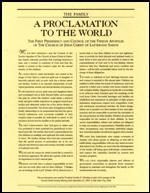Question
Gramps,
Where is the narrow neck of land described in the Book of Mormon Alma chapter 21?
Delores
Answer
Delores,
The narrow neck of land is not merely a geographical curiosity; it plays a pivotal role in the military and social dynamics of the Nephite and Lamanite civilizations. The Nephites recognized the strategic importance of controlling this passage, as it provided a defense against their enemies. Historical accounts indicate that the Nephites fortified this narrow passage to protect themselves from Lamanite incursions, demonstrating its significance in their survival strategy. The narrow neck allowed the Nephites to retreat into the land northward if they were pressed by the Lamanites, who often outnumbered them in battle.
The military significance of the narrow neck is further shown by the Nephite leader Mormon, who, during a time of great conflict, ordered his people to gather at the narrow pass leading into the land southward. This strategic decision highlights the narrow neck’s role as a defensive stronghold, allowing the Nephites to leverage their geographical advantage against a numerically superior foe.
Beyond its military significance, the narrow neck of land also had cultural and economic implications for the Nephite civilization. The passage facilitated trade and communication between the lands northward and southward, allowing for the exchange of goods, ideas, and cultural practices. This connectivity would have been essential for developing a cohesive society, as it enabled the Nephites to maintain relationships with their northern counterparts while engaging with the Lamanites to the south.
The geographical features surrounding the narrow neck, including rivers and fertile lands, would have further supported agricultural activities, contributing to the economic stability of the Nephite civilization. The river Sidon, which flowed northward through the land of Zarahemla, is one such feature that played a crucial role in the agricultural and economic life of the Nephites.
The quest to identify the narrow neck of land has led to various theories, with two primary contenders being the Isthmus of Panama and the Isthmus of Tehuantepec. Proponents of the Panama theory argue that the narrow neck described in the Book of Mormon corresponds to this isthmus, as it connects North and South America and is situated between two major bodies of water. However, critics of this theory point out that the Isthmus of Panama is significantly wider than what would be considered “narrow,” with a minimum width of approximately 30 miles.
On the other hand, the Isthmus of Tehuantepec, located in southern Mexico, presents a more compelling case for some scholars. This isthmus is narrower, measuring around 130 miles at its widest point, and is situated between the Pacific Ocean and the Gulf of Mexico. Some researchers suggest that the geographical features surrounding the Isthmus of Tehuantepec align more closely with the descriptions found in the Book of Mormon, particularly regarding the distances and travel times mentioned in the text.
One of the key factors in the debate over the narrow neck’s location is the travel times described in the Book of Mormon. Alma 22:32 states that it was “only the distance of a day and a half’s journey for a Nephite” from the east to the west sea across the narrow neck. This statement has led to various interpretations of how wide the narrow neck could be. Some scholars argue that the travel times mentioned in the text suggest a much narrower passage than the Isthmus of Panama, while others contend that the distances could accommodate a wider area, including the Isthmus of Tehuantepec.
Recent studies have highlighted the capabilities of certain indigenous groups, such as the Raramuri people of Mexico, who are known for their extraordinary running abilities. These groups can cover significant distances in a relatively short time, suggesting that the travel times mentioned in the Book of Mormon may not be as restrictive as previously thought. This perspective opens the door to a broader interpretation of the geographical features described in the text.
The identification of the narrow neck of land has profound implications for understanding the historical context of the Nephite and Lamanite civilizations. If the narrow neck is indeed located at the Isthmus of Tehuantepec, it would suggest that the Nephites were primarily situated in a region that is now part of modern-day Mexico, rather than extending their influence across the entire continent. This realization could reshape our understanding of the cultural and historical identity of the Nephites and their interactions with neighboring civilizations.
Furthermore, the geographical location of the narrow neck may influence how members of The Church of Jesus Christ of Latter-day Saints view their religious heritage. A more localized understanding of the Book of Mormon’s geography could foster a deeper connection to the land and its history, allowing for a more nuanced appreciation of the narratives contained within the text.
The geographical debate surrounding the narrow neck of land also raises theological questions about the nature of revelation and interpretation within the context of the Book of Mormon. As scholars and church members continue to explore the implications of the narrow neck’s location, they are confronted with the challenge of reconciling traditional beliefs with new insights and discoveries. This ongoing dialogue reflects the dynamic nature of faith and scholarship, as individuals seek to understand the complexities of their religious texts in light of contemporary knowledge.
Gramps







